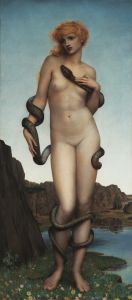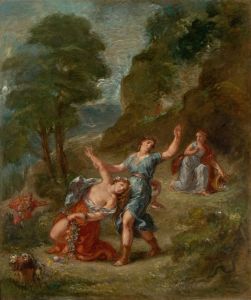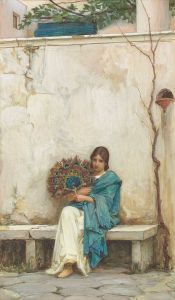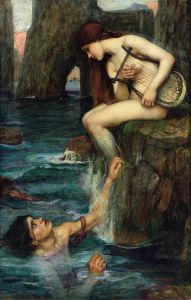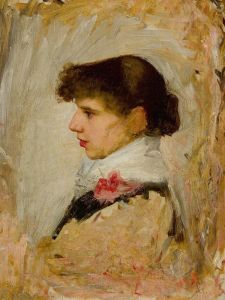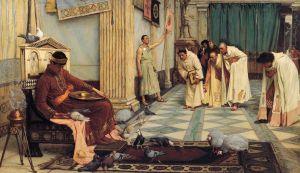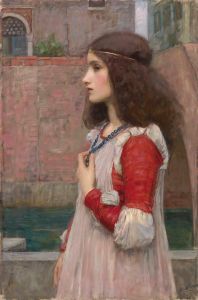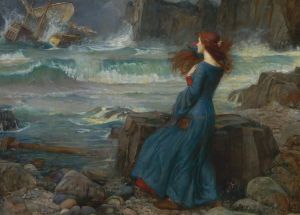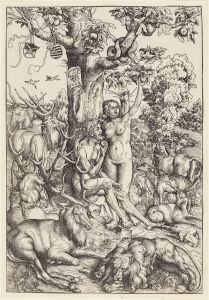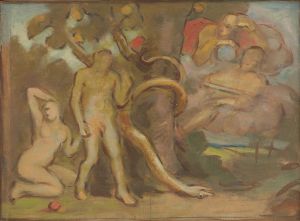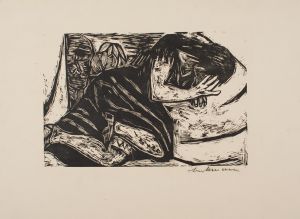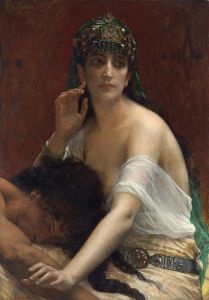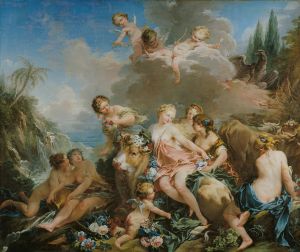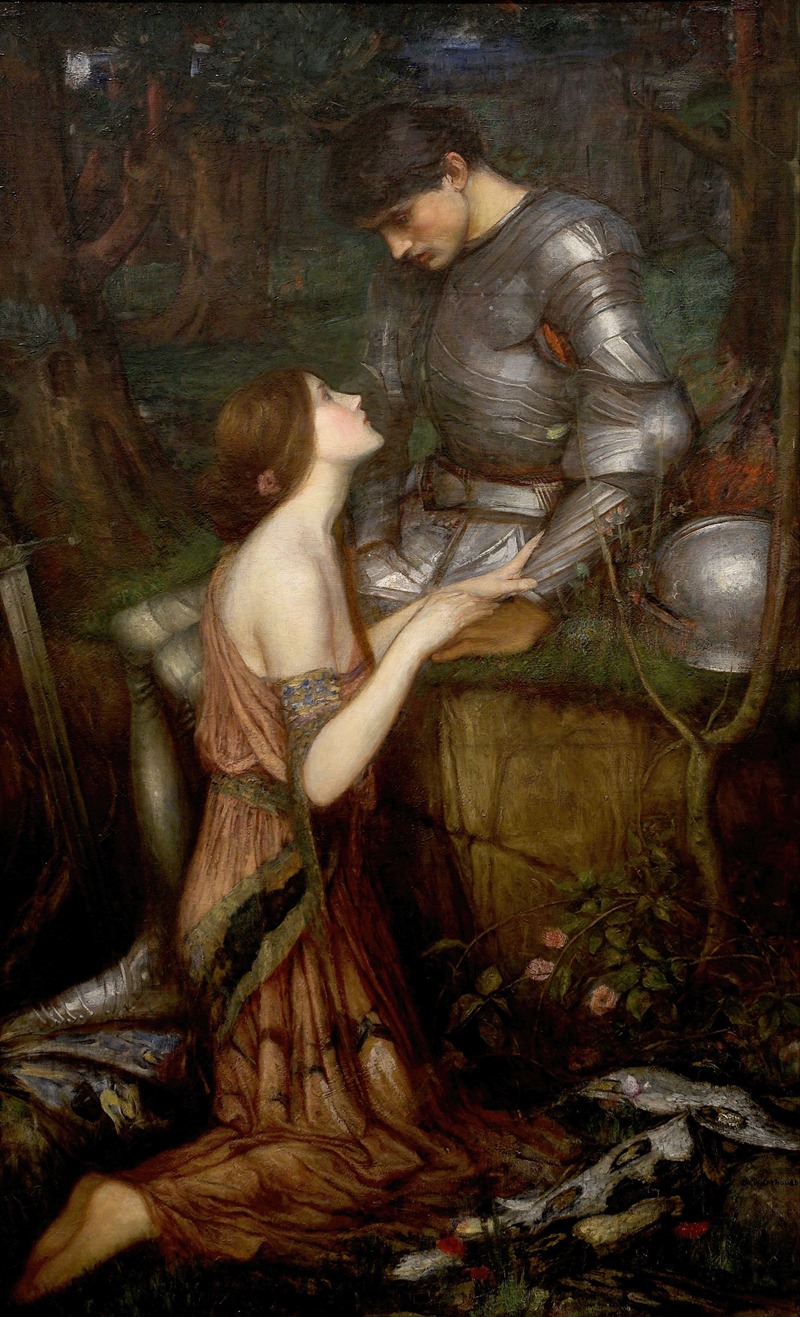
Lamia
A hand-painted replica of John William Waterhouse’s masterpiece Lamia, meticulously crafted by professional artists to capture the true essence of the original. Each piece is created with museum-quality canvas and rare mineral pigments, carefully painted by experienced artists with delicate brushstrokes and rich, layered colors to perfectly recreate the texture of the original artwork. Unlike machine-printed reproductions, this hand-painted version brings the painting to life, infused with the artist’s emotions and skill in every stroke. Whether for personal collection or home decoration, it instantly elevates the artistic atmosphere of any space.
John William Waterhouse's painting "Lamia" is an evocative work that draws inspiration from classical mythology and literature. Created in 1905, this painting is one of Waterhouse's later works and exemplifies his continued interest in mythological and literary themes, as well as his distinctive Pre-Raphaelite style.
Waterhouse was a British artist known for his depictions of women from mythology and literature, often portraying them in moments of contemplation or emotional intensity. "Lamia" is no exception, as it captures the complex character of Lamia, a figure from Greek mythology who has been interpreted in various ways over the centuries. In mythology, Lamia was a beautiful woman who was transformed into a serpent-like creature. She is often associated with themes of seduction and danger, as well as tragedy and loss.
The painting "Lamia" is based on the poem of the same name by John Keats, published in 1820. Keats's poem tells the story of Lamia, who falls in love with a young man named Lycius. Through her love, she temporarily regains her human form, but their happiness is ultimately doomed by the revelation of her true nature. Waterhouse's interpretation of Lamia captures the tension between her enchanting beauty and her underlying tragic fate.
In the painting, Lamia is depicted as a strikingly beautiful woman, seated in a contemplative pose. Her expression is one of introspection, perhaps hinting at her inner turmoil and the duality of her existence. Waterhouse's use of color and light enhances the ethereal quality of the scene, with soft, muted tones that create a dreamlike atmosphere. The attention to detail in Lamia's flowing garments and the natural surroundings further exemplifies Waterhouse's skill in rendering texture and form.
Waterhouse's "Lamia" reflects the influence of the Pre-Raphaelite Brotherhood, a group of artists who sought to return to the detail, vivid color, and complex compositions of pre-Renaissance art. Although Waterhouse was not an original member of the Brotherhood, his work is often associated with their ideals. His paintings frequently explore themes of love, beauty, and the supernatural, often featuring strong, enigmatic female figures.
"Lamia" is part of a broader trend in Waterhouse's oeuvre, where he revisits classical and literary subjects to explore the human condition and the complexities of emotion. The painting is a testament to Waterhouse's ability to blend narrative and visual beauty, creating works that resonate with viewers on multiple levels.
Today, "Lamia" is held in a private collection, and like many of Waterhouse's works, it continues to captivate audiences with its blend of mythological storytelling and artistic mastery. The painting remains a significant example of Waterhouse's contribution to the late Victorian art scene and his enduring legacy as a painter who bridged the gap between the Pre-Raphaelite movement and the emerging modernist trends of the early 20th century.





